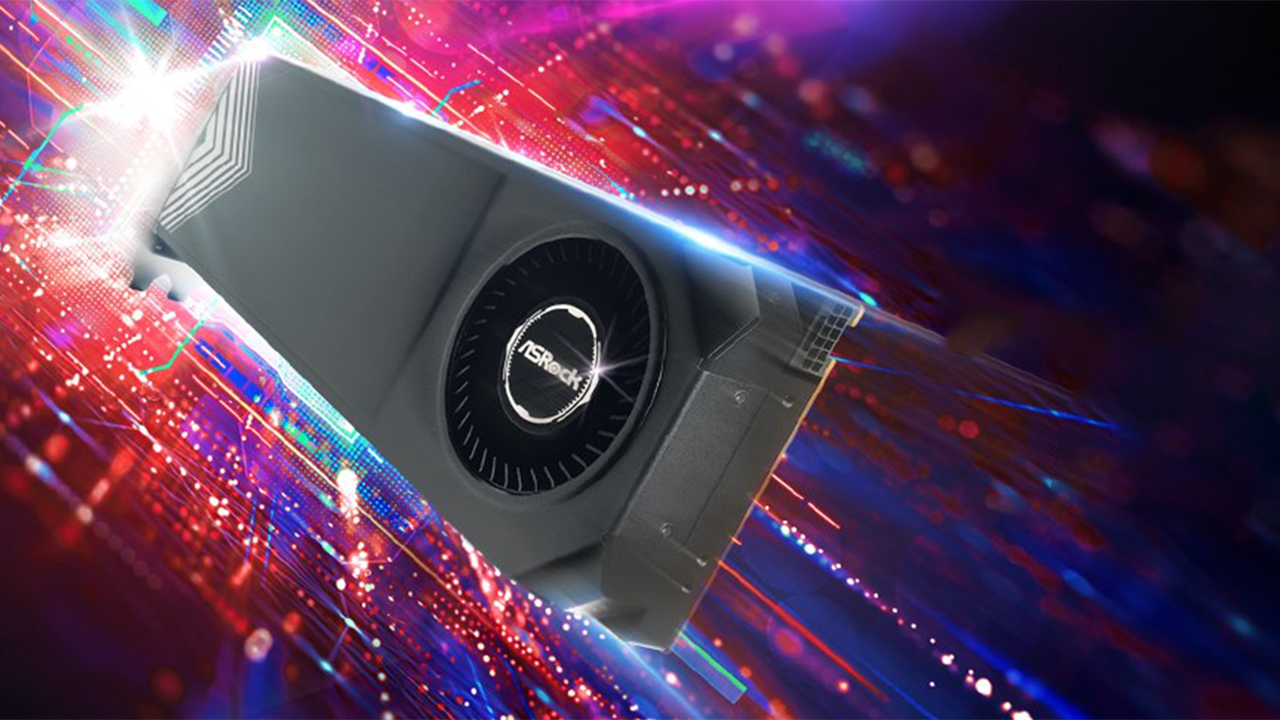ASRock launches Radeon RX 7900 WS cards with blower coolers and 12V-2×6 power connectors
For multi-GPU collaborative computing.

Just days before Computex kicks off, ASRock introduced its first Radeon RX 7900 WS graphics cards. These cards are not primarily aimed at gamers (even though they are clearly among the best graphics cards) but rather multi-GPU environments used for AI training and creative professionals. ASRock's new Radeon RX 7900 WS-series boards also happen to be the industry's first Radeon RX 7900 graphics cards with a blower cooler and a 12V-2×6 power connector.
ASRock's Radeon RX 7900 XT WS 20 GB and Radeon RX 7900 XTX WS 24 GB graphics cards come with specially designed cooling systems featuring a vapor chamber and one blower fan. While such coolers are two slots wide, they promise utmost efficiency under high loads and decent reliability, but at the cost of loud noise produced by the fan. The add-in-boards (AIBs) also come with a 12V-2×6 power connector — a first for a modern Radeon card.
ASRock says that its Radeon RX 7900 WS-series graphics cards are designed for multi-GPU environments, which is why they are equipped with a dual-slot cooler and a 12V-2×6 power connector in a bid to simplify installation into servers or large towers and avoid cable clutter. While the 12V-2×6 power plug might be an overkill for a Radeon RX 7900 from a power delivery point of view (as the Navi 31 GPUs consume considerably less than Nvidia's GB102), one power cable is definitely better than two.
Given the positioning of ASRock's Radeon RX 7900 XT WS 20 GB and Radeon RX 7900 XTX WS 24 GB graphics cards, we do not expect any factory-overclocked products and we can only wonder whether they can be overclocked at all. Yet, usage of a dual-slot cooling system on a 350W Radeon RX 7900 XTX may be a relatively risky choice. Even AMD's Radeon Pro W7900 48 GB workstation board has a triple-slot blower-type cooler and two eight-pin power connectors.
Of course, ASRock could increase the rotation speed of its blower and, therefore, noise level, and in a multi-GPU environment, noise level is hardly a big problem. Yet, the 'WS' moniker in the products' names clearly points to workstations, which are not meant to be utterly quiet but should not produce noises that are uncomfortable for the user.
It remains to be seen whether Radeon RX 7900 WS-series graphics cards will be widely used. The vast majority of professional users prefer Nvidia cards for ProViz applications, and using consumer-grade Radeon for AI training may not be the best, as Tinybox has demonstrated.
Get Tom's Hardware's best news and in-depth reviews, straight to your inbox.

Anton Shilov is a contributing writer at Tom’s Hardware. Over the past couple of decades, he has covered everything from CPUs and GPUs to supercomputers and from modern process technologies and latest fab tools to high-tech industry trends.
-
LabRat 891 At only 300W-400W, I suppose these cards will be the final say in just how flawed 12V-2x6 is.Reply
I fully expect to see reports of these 'lighting off' like Team Green's non-top tier cards equipped w/ same/similar.
Literally, I have 0 faith in that 'in-built obsolescence' connector. -
renz496 Reply
This is probably AMD partner hinting AMD to ditch that older 6 pin and 8 pin and migrate completely to new connector.LabRat 891 said:At only 300W-400W, I suppose these cards will be the final say in just how flawed 12V-2x6 is.
I fully expect to see reports of these 'lighting off' like Team Green's non-top tier cards equipped w/ same/similar.
Literally, I have 0 faith in that 'in-built obsolescence' connector. -
ocer9999 I'm guessing this is their first workstation card? I wonder if they use the gaming GPUs for this...Reply -
Replyocer9999 said:I'm guessing this is their first workstation card? I wonder if they use the gaming GPUs for this...
Yes. And these GPUs are based on the same Navi 31 die as the gaming variants.
Although, most of the specifications are the same as any other 7900 XTX or 7900 XT GPU, the clock, power, & design parameters have been adjusted (for AI workloads).
ASRock's RX 7900 XTX Workstation GPU comes with reduced base and game clocks of 1670 MHz / 2270 MHz (vs 1929 / 2365 MHz stock on the gaming card).
The boost clock remains the same though, at 2.5 GHz.
Most importantly, ASRock has bumped the memory specs, as the RX 7900 XTX Workstation GPU now sports memory speeds of 24 Gbps. The Gaming GPUs support 20 Gbps effective speed.
-
Might be overkill, but there would also be less cable clutter if they go for a single 12V-2\00d76 power connector, rather than having 3 8-pin cables in a multi-GPU environment.Reply
Given the positioning of ASRock's Radeon RX 7900 XT WS 20 GB and Radeon RX 7900 XTX WS 24 GB graphics cards, we do not expect any factory-overclocked products and we can only wonder whether they can be overclocked at all.
Why would you want to OC a workstation GPU in a multi-card environment though ?
But anyway, FWIW, these cards actually come with reduced base and game clocks as compared to their gaming counterparts. The boost clock remains the same though.
